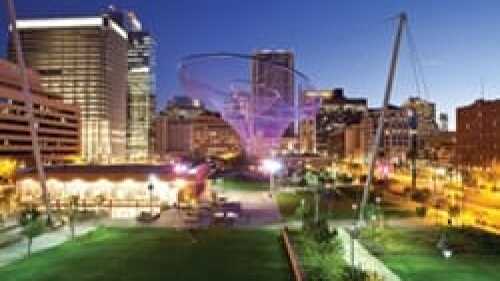Public Spaces
When it comes to urban infrastructure—from bridges to transportation systems to master plans—architects impart a sense of place and a human scale. But equally important are basic structural capabilities. Read more to learn what ULI leaders and others have to say about the progress being made in reconciling engineering with architectural values—to the benefit of regions, cities, and the individual.
Ten projects, all completed in the past five years, show innovative strategies for creating urban breathing spaces, providing residents with opportunities to commune with nature, gather, play, and reflect. Learn how through incorporating large works of public art and leveraging innovative public/private partnerships these parks exemplify the creativity needed to bring respite to city dwellers’ busy lives.
Because of the continued appeal of his unfettered approach to pedestrian-based design, Copenhagen architect and urban designer Jan Gehl has become something of an international celebrity. Read reviews of two of his books, Life Between Buildings, more or less a reprint of his first text published in Danish in 1971, and Cities for People, a Planetizen top ten selection from 2010.
Parks are increasingly being viewed as fiscal drains that further endanger a mayor’s bottom line. To counter that view comes Alexander Garvin, thinker in the realm of cities and public spaces. Read a review of his book Public Parks: The Key to Livable Communities, in which he presents the rationale for considering public parks as fundamental components of the built environment.
Though Hollywood, California, is arguably one of the most famous neighborhoods in the world, one thing it is not known for is its park space. Instead, it is known for the Hollywood Freeway, a busy expressway traversing the community as one segment of U.S. Route 101. Read about the myriad benefits a proposed billion-dollar cap park over the freeway trench would bring to the city.
In Northwest Indiana, restructuring has shrunk industry’s environmental footprint. In the 1980s, area leaders began to recognize the valuable asset in their midst—Lake Michigan and its shoreline. Read how five diverse cities spread across two counties are acting as one to recapture and preserve the lakeshore for open public use while capitalizing on its potential for economic development.
To transform the city’s moribund central business district, municipal officials in Quincy, Massachusetts, are partnering with Street-Works—a development firm that specializes in the creation of mixed-use districts around public spaces. What’s unusual about the Quincy project, however, is that the private sector—rather than the public sector—is doing the heavy lifting upfront. Learn more.
An international panel of real estate and land use experts convened by ULI advised the city of Chester, England, on how best to revive its aging retail district and leverage those efforts to create further revitalization programs. The city is trying to be “too many things to too many people,” panel members said. Read what areas the panel suggested Chester should focus on.
In Urban Green, author Peter Harnick asks fundamental questions about which kinds of parks to build, how much to build, for whom to build, and where the parks should go. Read what he considers essential in order for park advocates to move “to the point where a mayor’s traditional directive to a park superintendent—‘do more with less’—is replaced with the liberating permission to ‘do more with more.’”
The USDA’s Natural Resources Conservation Service is about to secure permanent easements on five properties totaling more than 26,000 acres (10,526 ha) in the Northern Everglades Watershed in central Florida. Read how ULI member and land broker Dean Saunders pulled this deal together, and how granting conservation easements is often better than selling land outright for conservation.








